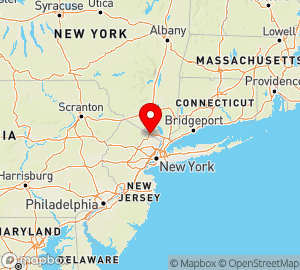New Jersey
New Jersey State Information

www.newjersey.gov
Area (sq mi):: 8721.30 (land 7417.34; water 1303.96) Population per square mile: 1175.30
Population 2005: 8,717,925 State rank: 0 Population change: 2000-20005 3.60%; 1990-2000 8.90% Population 2000: 8,414,350 (White 66.00%; Black or African American 13.60%; Hispanic or Latino 13.30%; Asian 5.70%; Other 8.10%). Foreign born: 17.50%. Median age: 36.70
Income 2000: per capita $27,006; median household $55,146; Population below poverty level: 8.50% Personal per capita income (2000-2003): $38,365-$39,577
Unemployment (2004): 4.90% Unemployment change (from 2000): 1.20% Median travel time to work: 30.00 minutes Working outside county of residence: 45.20%
List of New Jersey counties:
New Jersey Parks
- US National Parks
- Urban Parks
- State Parks
- Parks and Conservation-Related Organizations - US
- National Wildlife Refuges
New Jersey
Third state; adopted the U.S. Constitution on December 18, 1787
State capital: Trenton
Nickname: The Garden State
State motto: Liberty and Prosperity
State animal: Horse (Equus caballus)
State bird: Eastern goldfinch (Carduelis tristis)
State dance: Square dance
State dinosaur: Hadrosaurus foulki
State fish: Brook trout (Salvelinus fontinalis)
State flower: Purple violet (Viola sororia)
State fruit: Blueberry (Vaccinium corymbosum)
State insect: Honeybee (Apis mellifera)
State memorial tree: Dogwood (Cornus florida)
State shell: Knobbed whelk (Busycon Caricagmelin)
State ship: A.J. Meerwald
State tree: Red oak (Quercus borealis maxima)
More about state symbols at:
www.njleg.state.nj.us/kids/index.asp
http://www.state.nj.us/nj/about/facts/
SOURCES:
AmerBkDays-2000, p. 837
AnnivHol-2000, p. 210
STATE OFFICES:
State web site:
www.newjersey.gov
Office of the Governor
125 W State St
Box 001
Trenton, NJ 08625
609-292-6000
fax: 609-292-3454
www.state.nj.us/governor
Secretary of State
125 W State St
PO Box 300
Trenton, NJ 08625
609-984-1900
fax: 609-292-7665
www.state.nj.us/state
New Jersey State Library
185 N State St
PO Box 520
Trenton, NJ 08625
609-292-6200
fax: 609-292-2746
www.state.nj.us/statelibrary/njlib.htm
Legal Holidays:
New Jersey
New Jersey
a state in the eastern USA, located primarily on the marshy Atlantic Coastal Plain, with its northern section in the foothills of the Appalachians. Area, 20,300 sq km; population, 7.2 million (1971), of which 88.9 percent is urban. Capital, Trenton.
New Jersey is one of the most urbanized and economically developed states. It ranks first in the USA as the most densely populated, having more than 350 persons per sq km. In 1970 860,000 people were employed in manufacturing (more than one-third of New Jersey’s work force). Industrial enterprises, located primarily in the suburbs of New York and Philadelphia, use raw materials that are shipped into the state. The leading branches are machine building (electrical and radio electronic equipment, shipbuilding, aircraft engines and other aviation industry, and automotive assembly) and chemicals (petroleum refining and rubber). Other industries include clothing, knitwear, textiles (the manufacture of synthetic fibers), nonferrous metallurgy, and glass and pottery. Zinc is mined (27,000 tons in 1970). The capacity of the state’s hydroelectric power plants was 10 gigawatts in 1972. One percent of the work force is engaged in agriculture. There is a predominance of suburban farming, including vegetables, fruit, dairy products, and eggs.